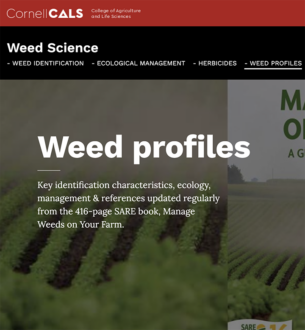Other common names: pick pocket, pepper plant, case weed, pick purse, shepherd’s bag, shepherd’s pouch, mother’s heart, St. James weed, witches’ pouches, toothwort, shovel plant
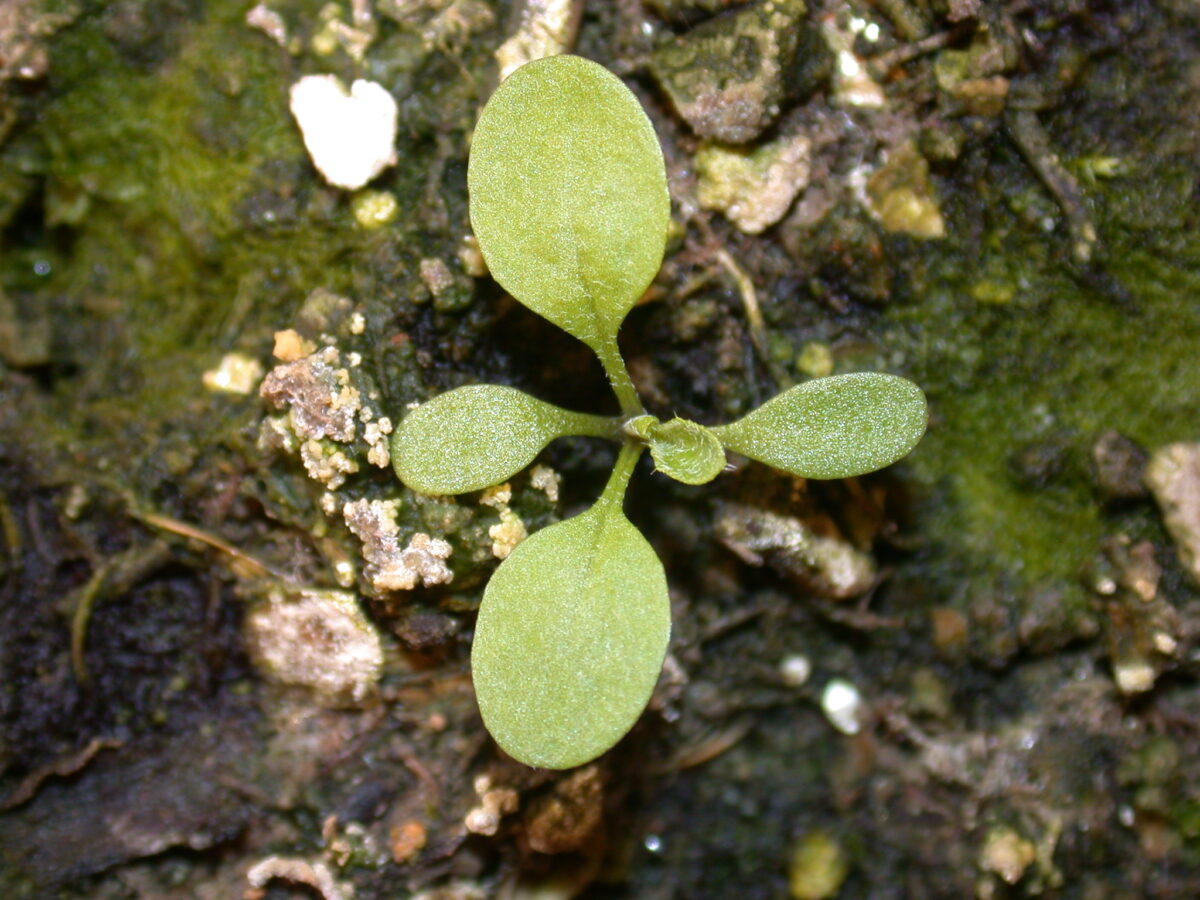
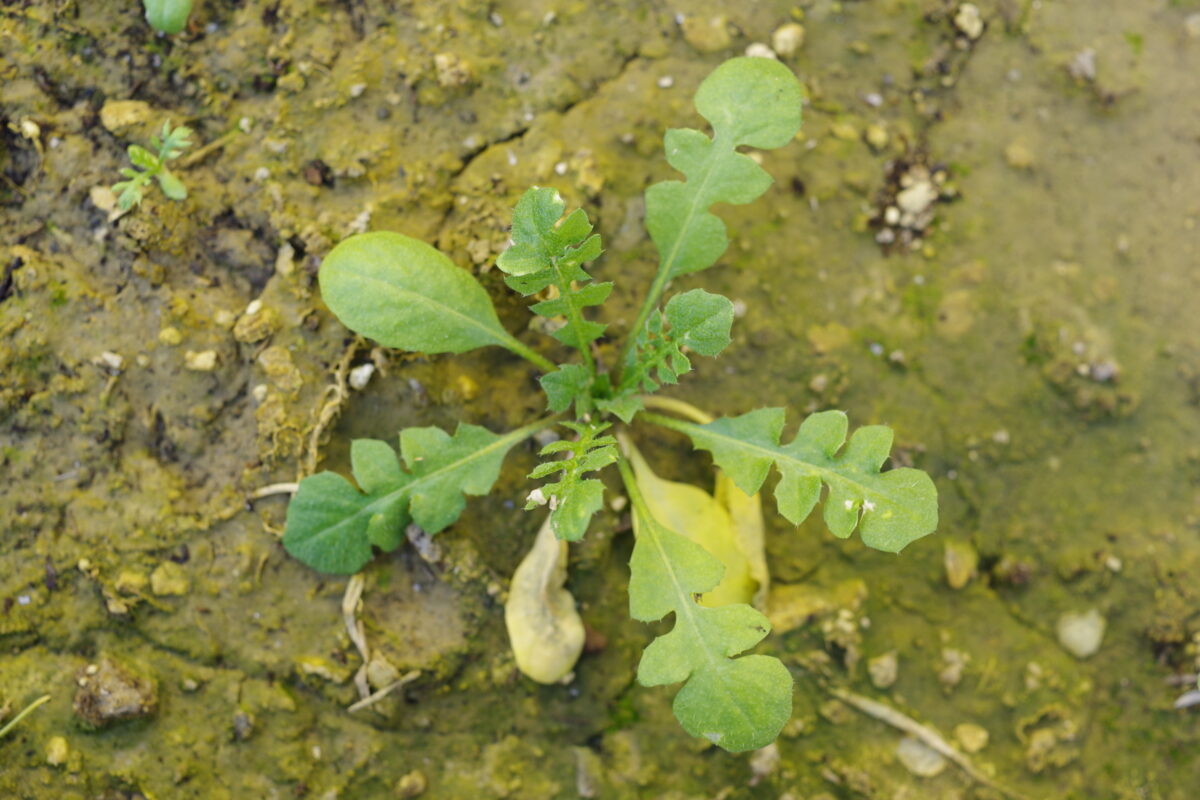
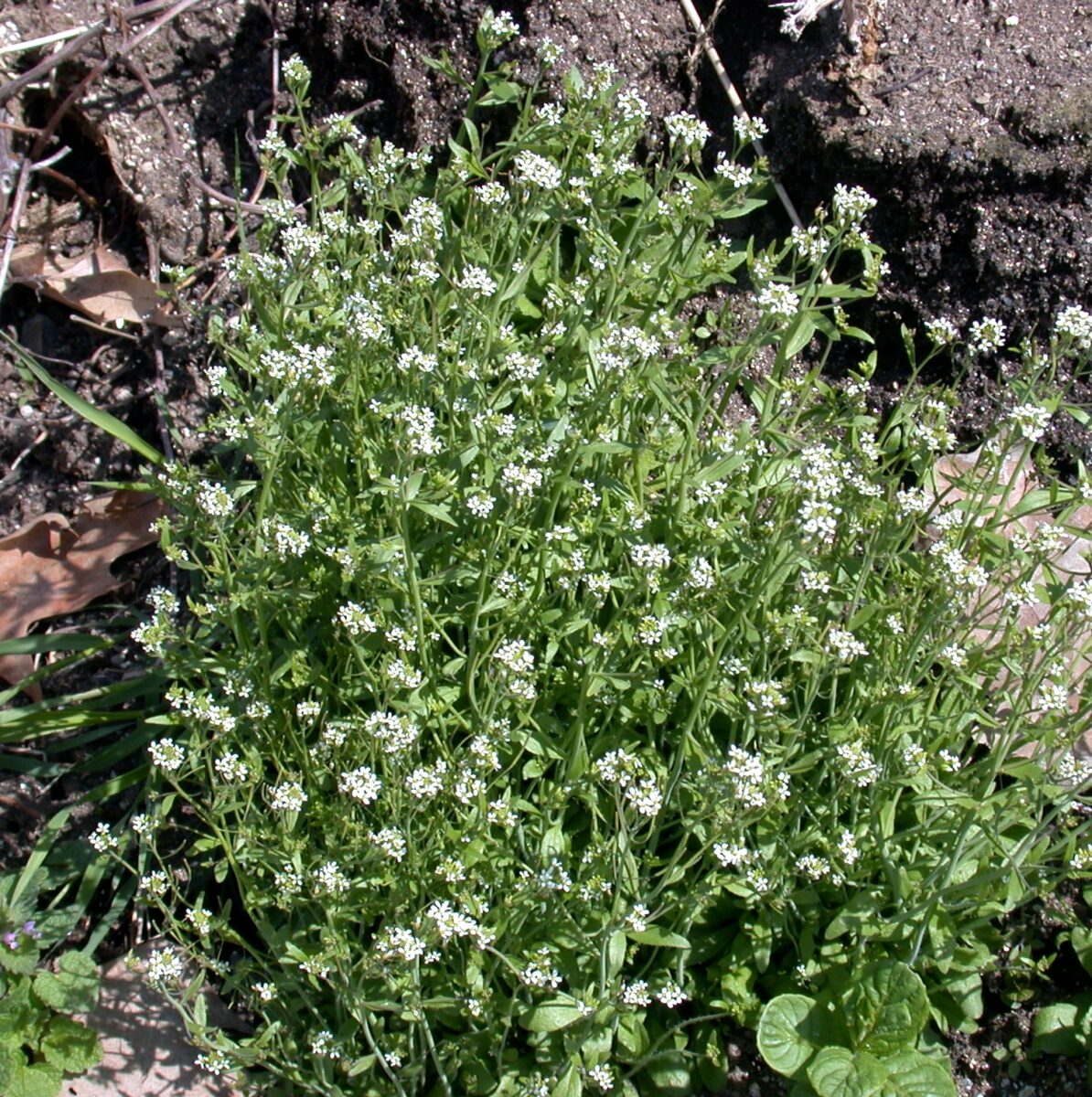
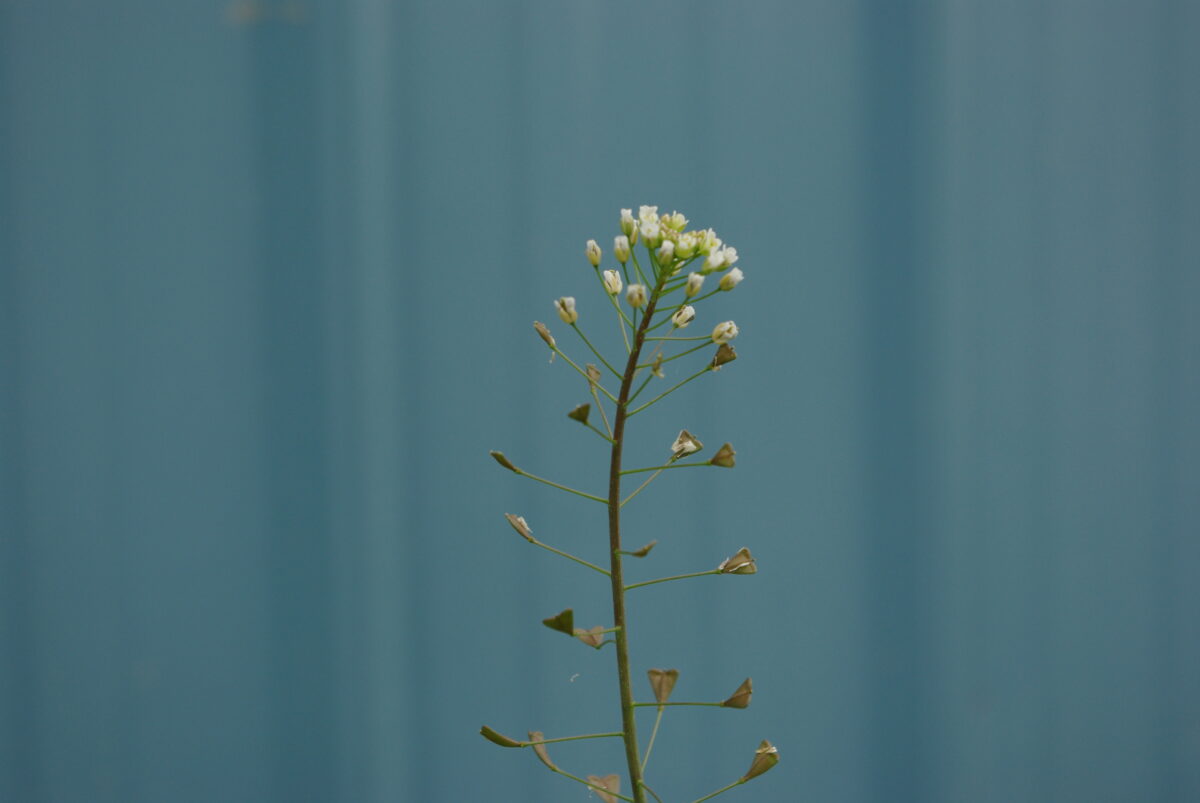
Capsella bursa-pastoris (L.) Medik.
Identification of Shepherd's-Purse
Family: Mustard family, Brassicaceae
Habit: Erect, winter or summer annual herb arising from a basal rosette
Description: The seedling stem is light green to purple. Cotyledons are oval to spatula shaped, 0.1–0.25 inch long by 0.06 inch wide, hairless and long stalked. The first two to four leaves are opposite, round to oval, without teeth or slightly toothed, and densely hairy. Hairs are short and spreading, with branching star-shaped tips. Some hairs may be unbranched. All subsequent leaves are alternate, oval to club-shaped, toothed to deeply lobed (occasionally entire), and form a basal rosette. The rosette leaves have hairs along the underside of the midvein and are hairless to sparsely hairy above. Mature plants bolt from the rosette to form a 4–30 inch-tall, occasionally branching flowering stem. The stem is green to purple, hairy towards the base and smooth to sparsely hairy above, and it has leaves only on the lower portions. Rosette leaves are 1.25–6 inches long by up to 1.5 inch wide and tapered towards the base. Leaf shape and hairs are similar to those of the seedling. Stem leaves are lanceolate, 0.4–2.2 inches long by up to 0.6 inch wide, alternate, without lobes, stalkless and may clasp the stem at the base. The taproot is thin and branching, with fibrous secondary roots. White, four-petaled flowers continually develop at the tips of the stem and branches. Each flower is up to 0.25 inch wide, with a 0.3–0.6 inch-long, hairless to sparsely hairy stalk. Stalks are initially upright, becoming spreading and nearly perpendicular to the stem as old flowers are replaced by flattened, heart-shaped seedpods. The seedpods are notched at the tip, two-segmented and 0.2–0.4 inch long by 0.1–0.3 inch wide. Each seedpod contains 10–20 seeds. The seeds are oblong, shiny, pale orange to red-brown, and 0.03–0.04 inch long by 0.01–0.02 inch wide.
Similar species: Spreading, star-shaped hairs and heart-shaped seedpods distinguish shepherd’s purse from similar species in the mustard family. Field pennycress (Thlaspi arvense L.), Virginia pepperweed (Lepidium virginicum L.) and field pepperweed [Lepidium campestre (L.) W.T. Aiton] are all rosette-forming annuals with flattened seedpods. Field pennycress leaves are hairless with wavy margins, while shepherd’s purse leaves are toothed or lobed. The flowering stems of Virginia pepperweed and field pepperweed have leaves throughout, while shepherd’s purse has leaves only on the lower parts of the stem.
Management of sShepherd's-Purse
Shepherd’s-purse germinates primarily in the spring and early fall. A lag between tillage and seedbed preparation at these times of year depletes the seed bank near the soil surface. Since the seedlings are tiny, tine weeding and other in-row and near-row cultivation easily kills them. Since shepherd’s purse is primarily a cool season species, rotation with warm season crops like squash and tomatoes break the life cycle of the weed. Rapid cleanup of the field after short, early season crops like lettuce and radishes will prevent seed set.
Shepherd’s-purse is a common weed in winter grain crops. Since the seedlings are small and fragile early in the plant’s life cycle and remain very short until spring, they are highly susceptible to fall harrowing. Pre-emergence harrowing will break or dry out white thread stage seedlings, and post-emergence harrowing can bury many of the established seedlings.
Dense planting helps control this weed in crops that will tolerate high density, particularly if the crops are tall, since the weed is always short. A fall forage radish cover crop effectively suppressed establishment of shepherd’s purse in fall and early spring. Emergence and growth may be suppressed by incorporated white mustard or buckwheat cover crops. Organic mulch materials are highly effective for suppressing shepherd’s purse, since the seedlings are tiny and the leaves remain flat on the ground until flowering.
Ecology of Shepherd's-Purse
Origin and distribution: Shepherd’s-purse originated in the eastern Mediterranean but today is a cosmopolitan weed found in most temperate regions of the world and at temperate elevations in the tropics and subtropics. The species occurs throughout the United States and Canada, including the far north. The similarity in genetic variation between three genetic clusters have been identified, the first occurring in the Middle East, a second in Europe and the most recent in eastern Asia. An accession from the United States was aligned with the Middle Eastern cluster.
Seed weight: Mean population seed weights range from 0.09–0.14 mg, with most lying near 0.1 mg. Heavier seeds tended to have higher germination rates.
Dormancy and germination: Seeds of shepherd’s purse are dormant when they ripen and require cold treatment before they are able to germinate. Nitrate can enhance germination, particularly in combination with fluctuating temperatures that include chilling. Once they are non-dormant, a high percentage of seeds will sprout at day/night temperatures ranging from 59/43°F to 86/59°F. Different populations of this species have variable temperature requirements, with some populations having a pronounced temperature optimum and others germinating equally over a wide range of temperatures. Seeds generally require brief exposure to light for germination, except in early spring when some seeds may germinate even in the dark. Warm soil temperatures (e.g., higher than 95/68°F day/night) will induce complete dormancy, but lower summer temperatures will induce dormancy in only a percentage of the seeds. Fall tillage will expose to light seeds that have been chilled the previous winter but were not exposed to dormancy-inducing summer temperatures. This allows prolific germination following tillage in late summer or fall. Stimulation of germination by tillage may also be explained by release of seeds from high carbon dioxide and low oxygen levels, as occurs beneath the soil surface. However, at high latitude locations, chilling fall temperatures maintain dormancy of seeds shed in summer and prevent germination during their first fall.
Seed longevity: Seeds can survive up to 35 years in undisturbed soils. Nearly 100% of seeds survived 30.5 months of burial in Sweden. Seed survival is longer in undisturbed soil. In a five-year study, the number of seeds declined by an average of 43% per year in soil stirred four times each year and 24% per year in uncultivated soil. Likewise, annual mortality was 35–52% in cultivated soil and 11–22% in undisturbed soil over six years in England. Annual mortality rates of 19% in Alaska and 21% in France also have been reported in undisturbed soil.
Season of emergence: Seedlings emerge in the fall and overwinter as rosettes close to the ground, or they emerge in the early spring. When emerging in spring, it is among the earliest emerging species. A few seedlings also come up during the warmer parts of the growing season and are notably more common during relatively cool summers. In Michigan, which has relatively cool summers, shepherd’s purse emerged primarily in late summer and only a small fraction emerged in fall and spring.
Emergence depth: Optimum emergence occurs approximately at the soil surface. Most seedlings emerge from within the top 0.5 inch of soil, and very few emerge from deeper than 1 inch.
Photosynthetic pathway: C3
Sensitivity to frost: Shepherd’s-purse is very frost hardy, with acclimated plants surviving temperatures of 10°F with little damage. Individuals that germinate in the fall commonly persist through the winter.
Drought tolerance: Shepherd’s-purse is relatively drought tolerant. For example, it grew better with alternating four days of watering and 10 days of drying than with regimes including more days of watering and fewer days of drying.
Mycorrhiza: Most reports indicate the absence of mycorrhiza on this species in England and Utah, but some samples from England have had mycorrhizal infections.
Response to fertility: Shepherd’s-purse is most common on fertile soils. Compared with many other weeds, however, it is only moderately responsive to balanced fertilization with N-P-K, but it does show a growth response to fertility rates beyond typical recommendations. At low P, its growth increases linearly with N fertilization up to, and probably beyond, 133 pounds per acre. At low N, it increased slightly but linearly with increasing P up to 54 pounds per acre of P. The species prefers neutral soils but tolerates soil with a pH of 5.
Soil physical requirements: Shepherd’s-purse is common on a wide range of soil textures and drainage classes but is intolerant of flooding. It is highly tolerant of soil compaction.
Response to shade: Shepherd’s-purse is relatively shade tolerant and will set seed in 80% shade. It can grow at light levels similar to those at soil level in a grassland with a closed leaf canopy.
Sensitivity to disturbance: Seedlings are tiny, fragile and easily broken. Even small rosettes readily retain soil on the root system, however, and will subsequently reroot after cultivation. Plants survive and regrow well after one cutting at 2 inches but die after three cuts. The species is moderately tolerant of trampling.
Time from emergence to reproduction: Flowering can occur in less than four weeks for spring emerging plants. Flowering time varies greatly both between and within populations. Flowering varied from six to 16 weeks for the majority of European populations. California populations showed a similar range with populations from hot, dry summer climates flowering earlier than those from cool, moist summer climates. Time to first flowering ranged from 23 days for populations from Asia to 44 days for populations from Europe, and early flowering was suggested as a mechanism for avoiding competition. Plants that begin flowering in early May begin producing ripe seeds by late May.
Pollination: Shepherd’s-purse is primarily self pollinated but is also insect pollinated.
Reproduction: Shepherd’s-purse reproduces only by seed. The flowers open first at the base of the inflorescence and continue to form at the top even as the capsules lower on the plant mature and shed seeds. Consequently, an individual plant produces seeds for many weeks. Seeds are viable when green fruit are full-sized. An average plant produces around 3,000 seeds, but large plants may produce 30,000–60,000 seeds. Immature capsules will continue to ripen and shed seeds even after the plant has been uprooted and killed.
Dispersal: Because the seeds often reach high densities in soil, they are easily spread from one site to another in soil clinging to shoes, tillage machinery and tires. Seed dispersal is facilitated by the mucilaginous seed surface that allows them to cling to animals or machinery. The seeds survive well in the digestive tracts of cows, sheep, horses and deer, and manure is commonly contaminated with shepherd’s purse seeds. Germination is minimally affected by digestion and dispersal by earthworms, which can facilitate deep burial and long-term survival in soils. Shepherd’s-purse also can be dispersed in irrigation water.
Common natural enemies: Many species of insects attack shepherd’s purse. The aphids (Aphis euonymi) and (Myzus certus) cause leaf rolling. Several curculio beetles in the genus Ceutorhynchus form galls on the leaves or stem. The fly larvae Dasineura brassicae gall the shoots, and Liriomyza strigara and Phytomyza horticola mine the leaves. Shepherd’s-purse is acceptable to all mollusks on which it has been tested, including the slug Agriolimax caruanae.
Palatability: Shepherd’s-purse has lower protein and digestible matter than alfalfa. The young foliage can be used as a pot herb or to provide a peppery taste in salads. The seeds are edible but are tiny and do not develop synchronously, which makes them hard to collect in quantity. The plant has a wide variety of medicinal uses, and these have contributed to its worldwide spread.
Summary Table of Shepherd's-Purse Characteristics
| Shepherd's purse | ||||||||
|---|---|---|---|---|---|---|---|---|
| Growth habit | Seed weight (mg) | Seed dormancy at shedding | Factors breaking dormancy | Optimum temperature for germination (F) | Seed mortality in untilled soil (%/year) | Seed mortality in tilled soil (%/year) | Typical emergence season | Optimum emergence depth (inches) |
| short, erect | 0.09–0.14 | Yes | cms, li, at, ni | 59/43 to 86/59 | 11–24 | 35–52 | fall and spring | 0–0.5 |
| Photosynthesis type | Frost tolerance | Drought tolerance | Mycorrhiza | Response to nutrients | Emergence to flowering (weeks) | Flowering to viable seed (weeks) | Pollination | Typical & high seed production (seeds per plant) |
| C3 | high | moderate | no | moderate | 4–16 | 2–3 | self, can cross | 3,000 & 50,000 |
Table Key
General: The designation “–” signifies that data is not available or the category is not applicable.
Growth habit: A two-word description; the first word indicates relative height (tall, medium, short, prostrate) and second word indicates degree of branching (erect, branching, vining).
Seed weight: Range of reported values in units of “mg per seed.”
Seed dormancy at shedding: “Yes” if most seeds are dormant when shed, “Variable” if dormancy is highly variable, “No” if most seeds are not dormant.
Factors breaking dormancy: The principle factors that are reported to break dormancy and facilitate germination. The order of listing does not imply order of importance. Abbreviations are:
scd = seed coat deterioration
cms = a period subjected to cold, moist soil conditions
wst = warm soil temperatures
li = light
at = alternating day-night temperatures
ni = nitrates
Optimum temperature range for germination: Temperature (Fahrenheit) range that provides for optimum germination of non-dormant seeds. Germination at lower percentages can occur outside of this range. The dash refers to temperature range, and the slash refers to alternating day/night temperature amplitudes.
Seed mortality in untilled soil: Range of mortality estimates (percentage of seed mortality in one year) for buried seeds in untilled soil. Values were chosen where possible for seeds placed at depths below the emergence depth for the species and left undisturbed until assessment. Mortality primarily represents seed deterioration in soil.
Seed mortality in tilled soil: Range of mortality estimates (percentage of seed mortality in one year) for seeds in tilled soil. Values were chosen for seeds placed within the tillage depth and subjected to at least annual tillage events. Seed losses are the result of dormancy-breaking cues induced by tillage, germination and deterioration of un-germinated seeds.
Typical emergence season: Time of year when most emergence occurs in the typical regions of occurrence for each weed. Some emergence may occur outside of this range.
Optimum emergence depth: Soil depths (in inches below the soil surface) from which most seedlings emerge. Lower rates of emergence usually will occur at depths just above or just below this range.
Photosynthesis type: Codes “C3” or “C4” refer to the metabolic pathway for fixing carbon dioxide during photosynthesis. Generally, C3 plants function better in cooler seasons or environments and C4 plants function better in warmer seasons or environments.
Frost tolerance: Relative tolerance of plants to freezing temperatures (high, moderate, low).
Drought tolerance: Relative tolerance of plants to drought (high, moderate, low).
Mycorrhiza: Presence of mycorrhizal fungi. “Yes” if present; “no” if documented not to be present, “unclear” if there are reports of both presence and absence; “variable” if the weed can function either with or without, depending on the soil environment.
Response to nutrients: Relative plant growth response to the nutrient content of soil, primarily N, P, K (high, moderate, low).
Emergence to flowering: Length of time (weeks) after emergence for plants to begin flowering given typical emergence in the region of occurrence. For species emerging in fall, “emergence to flowering” means time from resumption of growth in spring to first flowering.
Flowering to viable seed: Length of time (weeks) after flowering for seeds to become viable.
Pollination: “Self” refers to species that exclusively self-pollinate, “cross” refers to species that exclusively cross-pollinate, “self, can cross” refer to species that primarily self-pollinate, but also cross-pollinate at a low rate, and “both” refers to species that both self-pollinate and cross-pollinate at relatively similar rates.
Typical and high seed production potential: The first value is seed production (seeds per plant) under typical conditions with crop and weed competition. The second value, high seed production, refers to conditions of low density without crop competition. Numbers are rounded off to a magnitude that is representative of often highly variable reported values.
Further Reading
Aksoy, A., J.M. Dixon and W.H.G. Hale. 1998. Biological Flora of the British Isles No. 199: Capsella bursa-pastoris (L.) Medikus (Thlaspi bursa-pastoris L., Bursa bursa-pastoris (L.) Shull, Bursa pastoris (L.) Weber). Journal of Ecology 86: 171–186.
Defelice, M.S. 2001. Shepherd’s-purse, Capsella bursa-pastoris (L.) Medic. Weed Technology 15: 892–895.
Didon, U.M.E., A.K. Kolseth, D. Widmark and P. Persson. 2014. Cover crop residues—effects on germination and early growth of annual weeds. Weed Science 62: 294–302.
Lawley, Y.E., R.R. Weil and J.R. Teasdale. 2011. Forage radish cover crop suppresses winter annual weeds in fall and before corn planting. Agronomy Journal 103: 137–144.

